Rare Rides Icons: The History of Kia's Larger and Full-size Sedans (Part XIV)

Over 14 installments, we’ve finally reached the conclusion of our coverage of Kia’s midsize and large sedans. The Korean manufacturer’s original offerings were borrowed from other companies, most often Mazda. It’s been a long journey, but we finish our tale today with a promising-looking front-drive sedan that’s off-limits to North America. You might never have heard of it.
In the days before Mazda was under Ford's control, Kia sold Mazdas that it reworked for its own purposes. The old Mazda Capella became the midsize Concord and Capital, and then the 626 became the Credos. It also sold the late 80s 929 as the Potentia, and then the 90s 929 as the Enterprise.
After Hyundai took control of Kia in the late Nineties, Mazda was shown the door in favor of shared Hyundai platforms. Eventually, the company’s midsize segment settled into the various generations of Optima (today called K5). We covered the first generation Optima but passed over the rest for this series as they are not interesting.
All the while, Kia attempted to draw in more buyers with its larger full-size and luxury car offerings. And they required more work than some clip swaps and trim changes on a Mazda. The company’s larger cars failed to capture customer interest, no matter which market Kia attempted to enter. The awkward Opirus was the first attempt, followed up by two Cadenza models.
Above the Cadenza, Kia reached with the K9 (or K900). The rear-drive flagship shared a platform first with the large Equus, and presently with the Genesis G90 that arrived as Equus replacement years ago. With its ever-shrinking sedan market, Kia understood it was no longer worthwhile to bring the Cadenza or K900 to North America. And over the past three years or so, it pulled both models from dealerships.
Though the largest sedan Kia presently offers in North America is the K5, elsewhere the second generation K9 and Cadenza’s successor remain. Kia attempted to distance itself from the failed Cadenza and K7 with an all-new replacement in 2021. It’s called the K8.
Introduced in spring 2021 for the 2022 model year, the new K8 is full-size, front-drive, and very closely related to Hyundai’s Grandeur. The Grandeur is a long-running nameplate at Hyundai that traces its roots back to the mid-Eighties when it was a reworked Mitsubishi. Today, it’s Hyundai’s most expensive front-drive vehicle. You might remember the Grandeur of a few years ago, as it was sold in North America as the Azera from 2005 to 2016.
Though previous versions of the Cadenza used the same platform as the Grandeur, they retained their own sheet metal. The two cars ran on entirely different update cycles, as the Grandeur’s fifth generation was on sale from 2012 to 2017, while the Cadenza’s first attempt was from 2010 to 2016.
Cut to current product, and the Grandeur entered its current (sixth) generation in 2018. Surprisingly even though the Cadenza had historically slow sales, Hyundai still granted the K8 its own sheet metal. The Grandeur plays the more conservative traditional role like it always has, whereas the Kia is more sporty and aggressive.
The K8 returns to a stronger implementation of the Tiger Nose grille, though its body-colored instead of outlined in chrome. The grille wears a diamond pattern, which is filled in around the edges and creates an unusual visual effect. Narrow headlamps cut an aggressive shape against the hood and fender. There are plenty of power bulges on the hood that lead back to a relaxed A-pillar.
From there, the K8 has a panoramic glass roof treatment that’s not present on the Grandeur. Along its sides, the K8 is more aggressively sculpted than the Grandeur, with a faster and lower roofline and smaller windows. The Kia has a more horizontal character line than the Hyundai, which opts for a Buick-like conservative and flowing approach.
The rear passengers of the Grandeur have more headroom than the Kia, which almost looks like a five-door liftback in its rear-end design. Even though with its shape a liftback would make more sense, the K8 is still a traditional sedan.
The Grandeur is upright, and the roof treatment on the back half almost puts one in mind of the old Opirus from 20 years ago. Where the Kia goes for smooth lines and taut surfaces, the Grandeur goes for a ducktail rear end with a sharp scallop in the trunk lid. Both cars use a heckblende, though Kia’s looks more at home.
Both sedans are mechanically identical and ride on Hyundai’s N platform, though there are many more engine options on the Hyundai than on the Kia. And though both are on the same platform, they have different dimensions. In a surprising reversal of history, the K8 is a larger car than the Hyundai, with a longer wheelbase.
Grandeur rides on a 113.6-inch wheelbase, with an overall length of 196.5 inches and a width of 73.8 inches. The K8’s wheelbase is 114 inches, and it pips the Grandeur with an overall length of 197.4 inches. It has a matching width to the Grandeur, though the K8 is an inch lower than the Hyundai because of its sporty roofline, at 57.3 inches.
Engine options are four on the K8, and only one of its engines is shared with the Grandeur. The shared engine is the smallest one: Hyundai’s Smartstream 2.5-liter inline-four, with direct injection. The smallest engine produces 195 horsepower and 183 lb-ft of torque.
The other standard internal combustion offering in the K8 is the Smartstream 3.5-liter V6, again with direct injection. It manages a much more respectable 296 horses, and 265 torques. However, upon any consideration, those V6 figures were last impressive circa 2008.
There’s a hybrid option for the first time in Kia’s large front-drive sedan. It comes in the form of a 1.6-liter turbocharged inline-four paired with an electric motor. The hybrid version falls in the middle with regard to power and has 227 horses and 258 lb-ft of torque. There’s also a V6 LPG engine, a rework of the 3.5 V6 the K8 already uses.
As always LPG saps the power, and the V6 returns 237 horsepower and 231 lb-ft of torque. Transmissions include a six- or eight-speed automatic, though the hybrid version is the only one to use a six-speed. And unlike its predecessor, the K8 is available with optional all-wheel drive.
All K8s are produced at dedicated Kia plants and do not share an assembly line with the Grandeur (which is made at Hyundai’s Asan plant). South Korean-produced examples are made at the Hwaseong plant, while select markets receive K8s made in Jizzakh, a city in Uzbekistan.
There may be a bright international future for the new K8. According to Kia, it received over 24,000 orders for the sedan before it entered production, a good chunk of its 80,000 sales target in 2022. In its various markets, the K8 will ask between $29,000 for a front-drive four-cylinder and $40,000 for the all-wheel drive V6.
Given how much nicer it looks than the current K5, that pricing seems reasonable. Don’t bet on it ever arriving in North America; customers here turned away from large sedans (especially Kia’s) long ago.
[Images: Hyundai, Kia]
Become a TTAC insider. Get the latest news, features, TTAC takes, and everything else that gets to the truth about cars first by subscribing to our newsletter.

Interested in lots of cars and their various historical contexts. Started writing articles for TTAC in late 2016, when my first posts were QOTDs. From there I started a few new series like Rare Rides, Buy/Drive/Burn, Abandoned History, and most recently Rare Rides Icons. Operating from a home base in Cincinnati, Ohio, a relative auto journalist dead zone. Many of my articles are prompted by something I'll see on social media that sparks my interest and causes me to research. Finding articles and information from the early days of the internet and beyond that covers the little details lost to time: trim packages, color and wheel choices, interior fabrics. Beyond those, I'm fascinated by automotive industry experiments, both failures and successes. Lately I've taken an interest in AI, and generating "what if" type images for car models long dead. Reincarnating a modern Toyota Paseo, Lincoln Mark IX, or Isuzu Trooper through a text prompt is fun. Fun to post them on Twitter too, and watch people overreact. To that end, the social media I use most is Twitter, @CoreyLewis86. I also contribute pieces for Forbes Wheels and Forbes Home.
More by Corey Lewis
Latest Car Reviews
Read moreLatest Product Reviews
Read moreRecent Comments
- Jeff One less option will be available for an affordable midsize sedan. Not much can be done about GM discontinuing the Malibu. GM, Ford, and Stellantis have been discontinuing cars for the most part to focus on pickups, crossovers, and suvs. Many buyers that don't want trucks or truck like vehicles have moved onto Japanese and South Korean brands. Meanwhile large pickups and suvs continue to pile up on dealer lots with some dealers still adding market adjustments to the stickers. Even Toyota dealers have growing inventories of Tundras and Tacomas.
- Lorenzo This car would have sold better if there was a kit to put fiberglass toast slices on the roof.
- Lorenzo The Malibu is close to what the 1955 Bel Air was, but 6 inches shorter in height, and 3 inches shorter in wheelbase, the former making it much more difficult to get into or out of. Grandma has to sit in front (groan) and she'll still have trouble getting in and out.The '55s had long options lists, but didn't include a 91 cubic inch four with a turbo, or a continuously variable transmission. Metal and decent fabric were replaced by cheap plastic too. The 1955 price was $1765 base, or $20,600 adjusted for inflation, but could be optioned up to $3,000 +/-, or $36,000, so in the same ballpark.The fuel economy, handling, and reliability are improved, but that's about it. Other than the fact that it means one fewer sedan available, there's no reason to be sorry it's being discontinued. Put the 1955 body on it and it'll sell like hotcakes, though.
- Calrson Fan We are already seeing multiple manufacturers steering away from EVs to Hybrids & PHEVs. Suspect the market will follow. Battery tech isn't anywhere close to where it needs to be for EV's to replace ICE's. Neither is the electrical grid or charging infrastructure. PHEV's still have the drawback that if you can't charge at home your not a potential customer. I've heard stories of people with Volts that never charge them but that's a unique kind of stupidity. If you can't or don't want to charge your PHEV then just get a hybrid.
- AZFelix The last time I missed the Malibu was when one swerved into my lane and I had to brake hard to avoid a collision. 1 out of 5⭐️. Do not recommend.





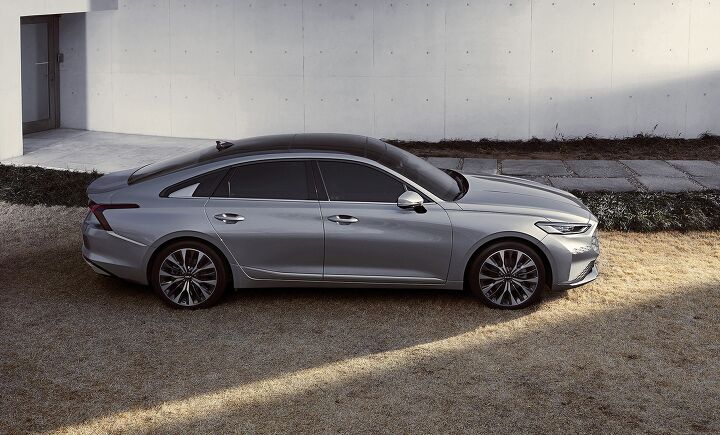






















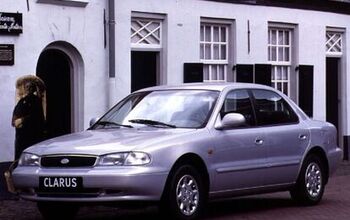
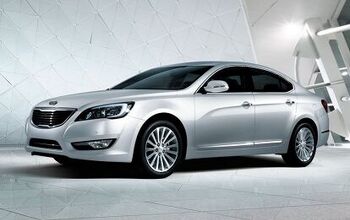
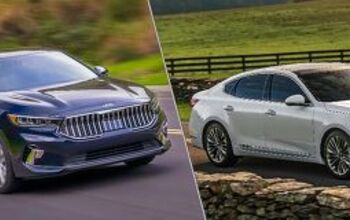
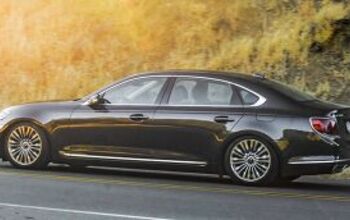











Comments
Join the conversation
Wait I’m confused lol . U didn’t touch on anything current just mostly on the Korean market ? Wasn’t the k8 front wheel ? Maybe u can touch on the stinger ? It’s so cool
It's a shame sedans are falling out of market favor; Kia finally figured out how they should look.